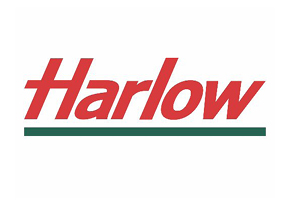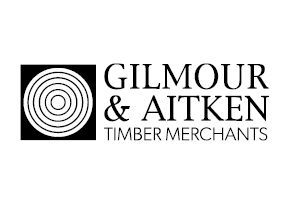- Case Studies
- Acharacle Primary School, Acharacle, Argyll
Acharacle Primary School, Acharacle, Argyll
Background
Acharacle is a small and remote community on the south-west tip of Loch Shiel, some 40 miles west of Fort William. For many years the village had campaigned for a new primary school and community space to replace the old Victorian buildings, which were becoming difficult and expensive to maintain. In 2004, Highland Council invited tenders to compile a brief for the development of a new primary school.
The Highland Structure Plan 2001 and a document "Designing for Sustainability in the Highlands", in draft at the time, set requirements including - supporting viable communities; contributing to a prosperous and vibrant local economy; safeguarding and enhancing the natural and built environment. Within this context, Gaia Architects were appointed to compile a brief for the school. They then continued as project architects. Gaia were keen to develop a scheme which had minimal environmental impact, while satisfying the needs of the users. They guided the client and the community in many of the design choices to be made.
Building description
The original school was housed in a Victorian building on the same site. To allow it to continue to function as a school during construction, the new single storey school is built on the original playground. With input from the community carefully taken into account, the design has two wings leading off a central entrance. The classroom wing is orientated to face south and make best use of daylight and solar gain, while the administration and community areas run north, with glazing facing east and west.
The Brettstapel method
Timber frame construction met many of the requirements of the scheme. However, because of our relatively mild and wet climate, much home grown timber is too fast growing so inadequate for structural grades. Although there are currently no manufacturing facilities in the UK, the Brettstapel method has raised heads here, as a possible future solution for using more locally sourced timber in structural applications.
The Brettstapel method uses timber which may otherwise be unsuitable for structural use. It comprises untreated softwood studs pinned together with hardwood dowels, and can be used to form solid, load-bearing timber walls, floors and roofs. Brettstapel translates into English as "stacked planks". Various manufacturers each have their own ways of orientating and fixing studs together to create their own unique product. Typically, diagonal holes are drilled though several studs and then dowels of much lower moisture content than the softwood studs are installed into them. The dowels pick up moisture from the surrounding softwood, expand and thus become locked into place.
As there is no need for glue or metal fixings, the makers claim that Brettstapel products are more sustainable and do not emit harmful toxins. Panels can be cut to size both in the factory and, if required, on site without the risk of hitting any metalwork within them. It is argued that as no adhesive, pressing or drying is required, Brettstapel construction is cost-effective compared to many of its competitors. Large Brettstapel panels can be manufactured to any size, limited only by transport restrictions. The large size of the panels also assists in the speed of construction, as fewer sections are required to complete a structure. Although the majority of buildings constructed to date are two-storey houses, four-storey buildings have been erected in Germany and Austria. With spans up to 15 metres also possible, a variety of bridges and industrial units have been built in Switzerland, Austria and Germany.
The finish is likely to be determined by its end use -whether the timber is exposed and if so, how clean the finish should be. Panels can be manufactured unplaned, with knots and stains visible, for hidden work, or made from carefully selected timbers with few defects and a planed finish where they can be left exposed as a feature of the building. By chamfering stud edges, or staggering studs as they are assembled into a panel, different visual effects can be achieved. Acoustic profiles are also possible, by machining gaps of a particular shape into studs before assembly into a panel. These gaps are designed to absorb airborne sound.
Design challenges
The project was originally conceived as a post and beam timber frame structure, with infill panels. But after higher than anticipated costings were received for this, the client realised that an alternative method needed to be found. The challenge was to find a solution which reduced costs, but retained many of the original sustainability ideas and design concepts. In a previous year on study tour, both Gaia Architects and the client had witnessed at first hand a variety of novel school buildings in Scandinavia and Europe. This led them to the Brettstapel method and a fabricator, Sohm Holzbautechnik GmbH of Austria as a possible supplier for their school building. Costs for the Brettstapel method were submitted and came in lower than the timber frame post and beam originally proposed. With forward thinking, the Highland Council decided that they were prepared to accept this novel method of construction. The first large Brettstapel building for the UK was set to get underway.
Fabrication
When using prefabricated panels, even small design changes at a late stage can cause delays and additional expense. The more specialist and prefinished a panel is, the less practical adapting panels on site becomes. Great care was therefore needed in the planning of the Brettstapel wall, floor and roof panels to ensure that site construction went smoothly. Site conditions, panel connections, service integration and required finishes were all carefully considered during the planning. Much of the planning already carried out for the original concept meant that converting the school design to Brettstapel proved to be relatively straightforward. The architects took the precaution of working closely with the fabricator to solve design and manufacturing issues. They based themselves at the factory in Germany for a week to ensure that key aspects of the design and construction were thoroughly considered. An example of this is that the school wing rises slightly on a slope, so the best way of detailing a stepped roof using this form of construction needed to be worked out. Another involved the location and routing of services around the building.
Low energy
Although the Brettstapel panels used were constructed in Austria and delivered by road to Acharacle, a journey of nearly 2000 km, the amount of CO2 locked away in timber exceeds that used in construction and transportation. Most structural timber used in the UK is imported here anyway and much of it comes from Northern Europe. By demonstrating the qualities of Brettstapel in the UK, those who champion it here hope that soon it will gain sufficient popularity to be made using British grown timber and manufactured here too. Its own environmental credentials will then be hard to beat.
The school has an enviable list of environmental credentials, including:
- Glue free mass untreated timber construction: chemicals which would normally be present for preservation and structural performance are absent in Brettstapel. It is claimed that this creates a healthier environment for the occupants.
- Glue free mass untreated timber construction: chemicals which would normally be present for preservation and structural performance are absent in Brettstapel. It is claimed that this creates a healthier environment for the occupants.
- A very low tested air permeability of 0.27m3/m2/hr@50Pa. Great care was taken during design and construction to reduce air leakage. This is an important part of the strategy to reduce energy used for heating to a minimum. Services were kept away from external envelope wherever possible to reduce penetrations.
- A U-value of 0.128 W/m2K for walls and roof: this was achieved using 280mm of wood fibre insulation.
- A U-value of 0.098W/m2K for floors: this was achieved using blown in cellulose insulation and wood fibre insulation between the timber floor joists/battens.
- A wind turbine for water heating and power: an exposed hillside above the school was chosen to site a 6kW wind turbine. This heats hot water within the school.
- Rainwater harvesting: used to flush the toilets.
June 2010
Client:Highland Council
Completion Date:May 2009
Architect:Gaia Architects
Frame Manufacturer / Erector:Sohm Holzbautechnik GmbH, Austria
Infrastructure and Fit Out / Finish:MacGregor Construction, Inverness
Suggested Reading
Specifying externally exposed structural timber
This Wood Information Sheet (WIS) looks at some of the factors to consider when specifying a desired service life for structural timbers that are to be exposed outdoors but not in contact with the ground.
This WIS addresses general principles of structural design only, giving an overview of the...
24/11/2017
Standards Update October 2017
An update of British, European and International Standards relating to timber, including new and revised Standards, those withdrawn or amended and drafts now available for public comment, updated bimonthly.
30/10/2017
List of British Standards October 2017
A list of British Standards which relate directly to timber, updated bimonthly.
30/10/2017






















